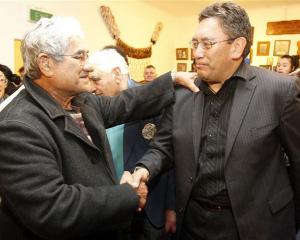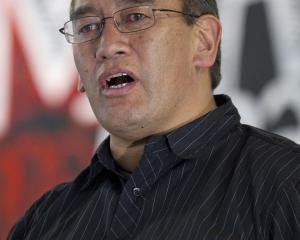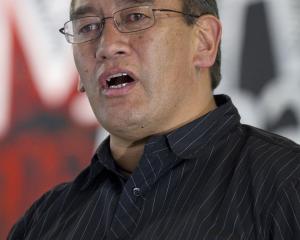Michael Bassett says that Hone Harawira's racial purity ruminations are about two centuries too late.
Hone Harawira's call to prevent what in the South African Apartheid years was known as miscegenation (intermarriage between races) in his family comes two centuries too late.
Mixed-race sexual relations have been a part of New Zealand life since Captain Cook.
Well before the treaty was signed in 1840, Pakeha whalers, sealers and traders had established liaisons with Maori women resulting in mixed-race children.
The rush of mostly British settlers after 1840, boosted by Gold Rush immigrants in the 1860s, and Vogel's immigrants in the 1870s, brought to our shores huge numbers of settlers, many of them unattached young males.
One major factor in the so-called dying out of the Maori race in the late 19th century was the fact that more and more people of Maori ancestry no longer qualified for the then strict definition of who was a Maori for census purposes.
The four great early 20th-century Maori leaders, Sir James Carroll, Sir Apirana Ngata, Sir Maui Pomare and Sir Peter Buck all had non-Maori blood in their veins.
At the time of the treaty, Maori were not numerous in the South Island.
It is widely believed that by 1900 the last full-blooded Maori had gone from there.
As southerners drifted northwards, farming more and more of the North Island, mixed race co-habitation steadily increased.
By the 1950s, large numbers of mixed race people were found in even the remotest parts.
Often, those mixed-race people married each other, and it became increasingly difficult for them to trace their tribal ancestries.
Today, it is not uncommon for Maori to list as many as six tribal connections.
Most Maori MPs of recent times have had Pakeha ancestors.
Pita Sharples and Tariana Turia have, and I would guess that the other Maori Party MPs including Hone Harawira himself, also do.
It's surely a bit late for Mr Harawira to preach racial purity?
That train left the station two centuries ago.
Prior to 1974, a Maori was defined as someone who was half-caste or more.
But by 1974, it was increasingly difficult for many Maori to work out what, precisely, was their proportion of Maori blood for electoral, land and other purposes.
The Maori Affairs Amendment Act 1974 redefined a Maori as "a person of the Maori race of New Zealand; and includes any descendant of such a Maori".
This hugely widened the definition of who was a Maori.
During the debate on the Bill, one MP scoffed that it now seemed so wide that anyone who cycled past a marae could claim to be a Maori.
Nearly every day, New Zealanders discover that friends, neighbours, and grandchildren have a small portion of Maori blood.
It doesn't worry us; it's just part of the rich tapestry of modern New Zealand.
It is Mr Harawira and Prof Margaret Mutu who seem to have problems.
Would Mr Harawira worry if one of his children came home with someone who is more Pakeha than Maori? One of Shane Jones' children, for example? Most people who are entitled to call themselves Maori under the 1974 Act are less than half Maori.
Would one-quarter Maori and three-quarters Pakeha satisfy him? And what about the thousands of people who have as little as one-thirty-second part of Maori blood? Still Maori under the 1974 Act, but barely so.
Or is there some magical figure in the Harawira-Mutu calculations when the wicked Pakeha influence that they detest, has been sufficiently swamped? The way New Zealand society is changing, racial separatists among Maori will have to hurry or there will be no remaining partners for their children.
Why not just give up and face the fact that for 200 years more and more young people have been acquiring some Maori ancestry, even quite a few new migrants.
If that matters, then Mr Harawira and Prof Mutu owe us a serious explanation.
And it had better be more convincing than the sort of separatist claptrap preached by that high priest of South African Apartheid, Dr Hendrick Verwoerd.
Michael Bassett is a historian, former cabinet minister, and a member 1994-2004 of the Waitangi Tribunal.








